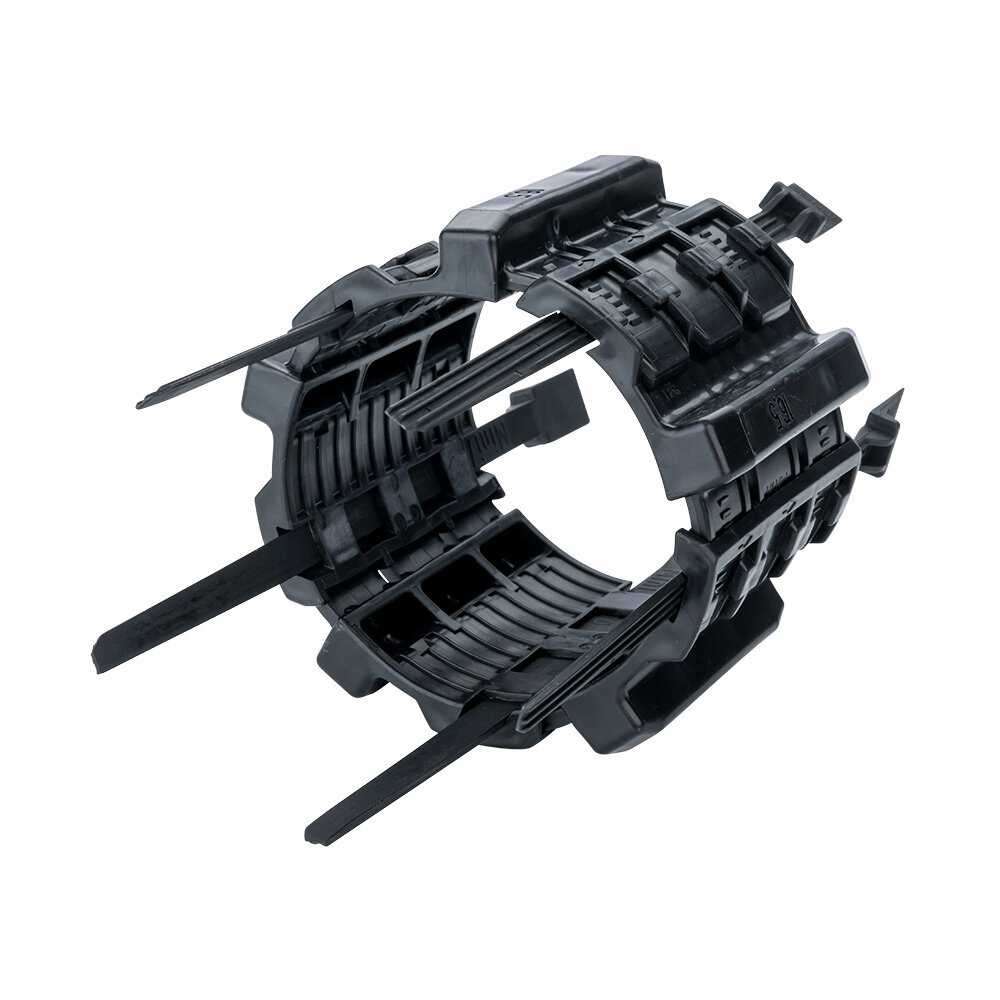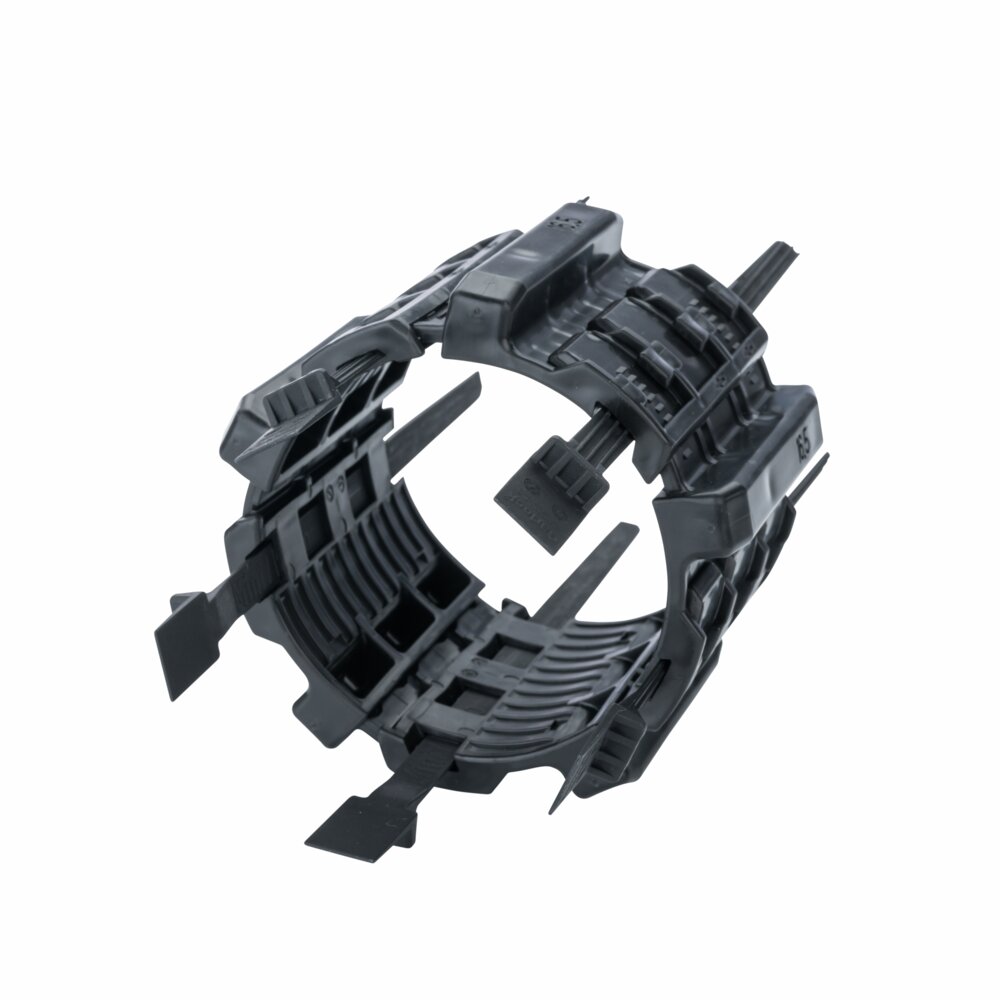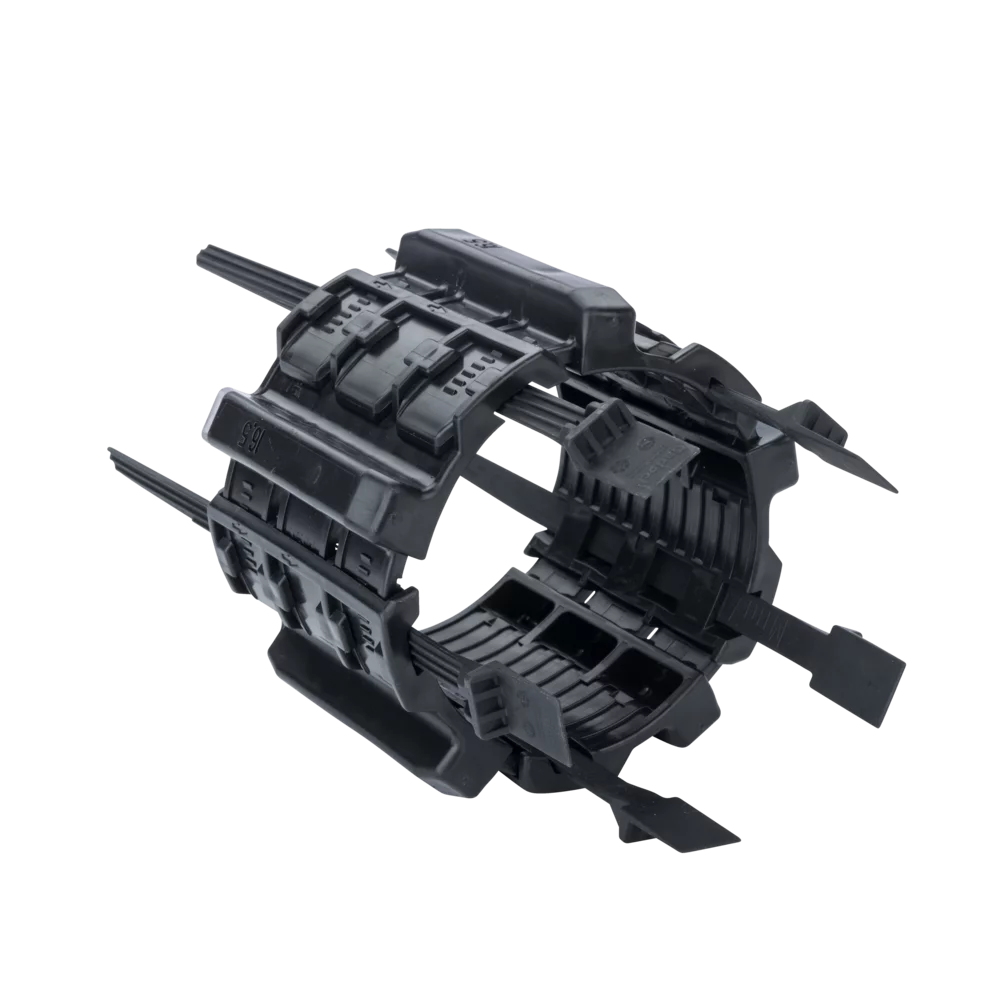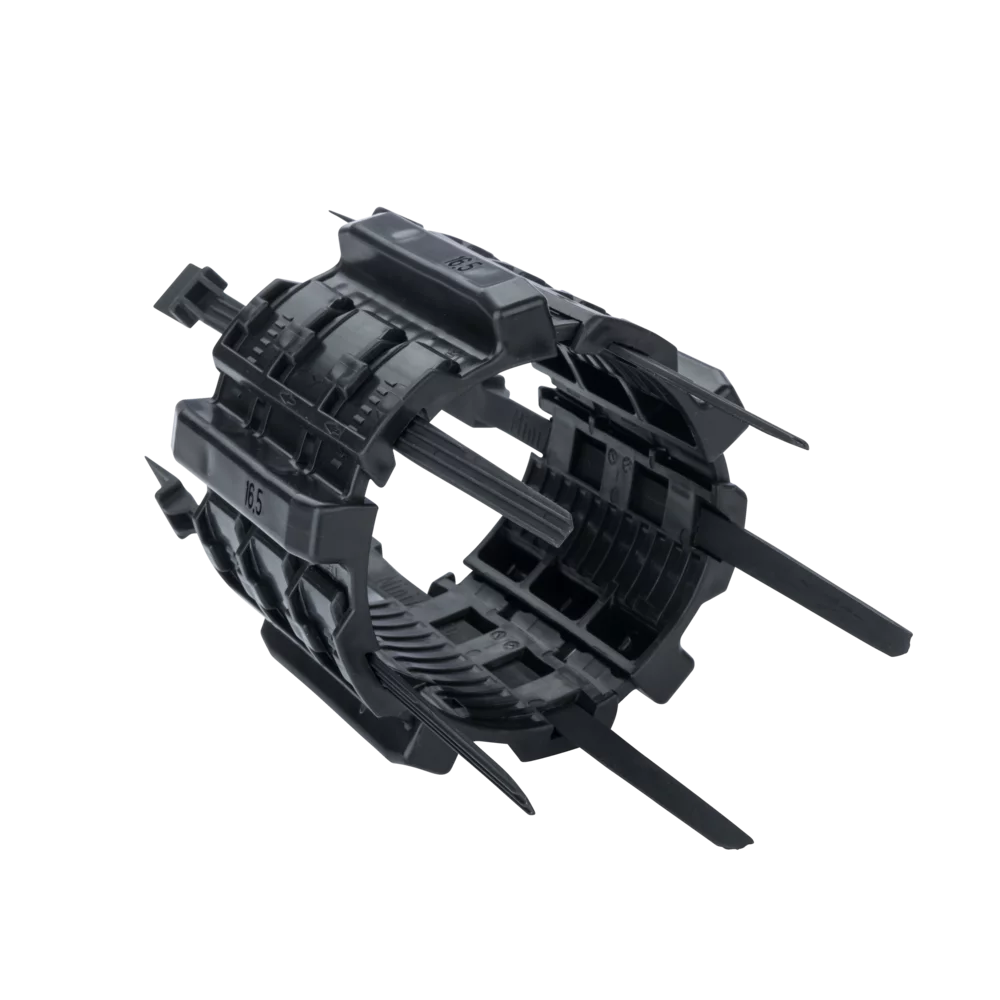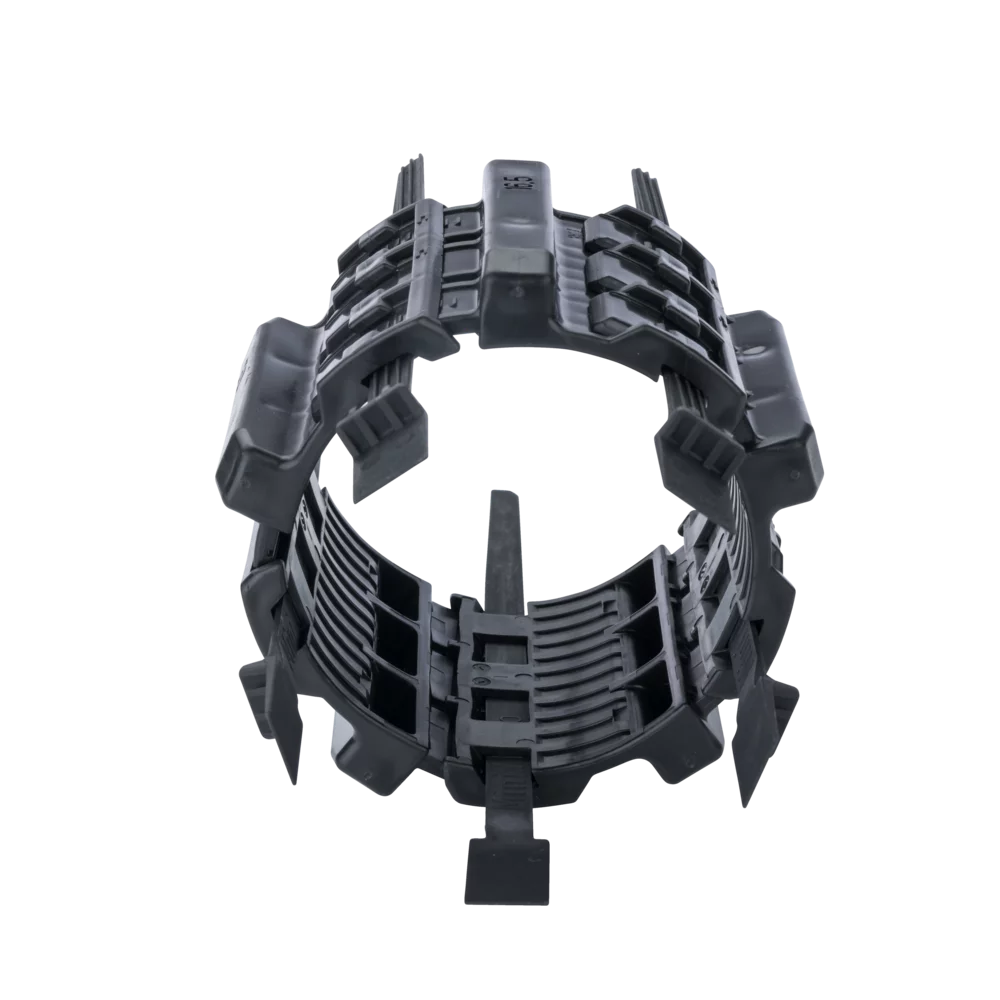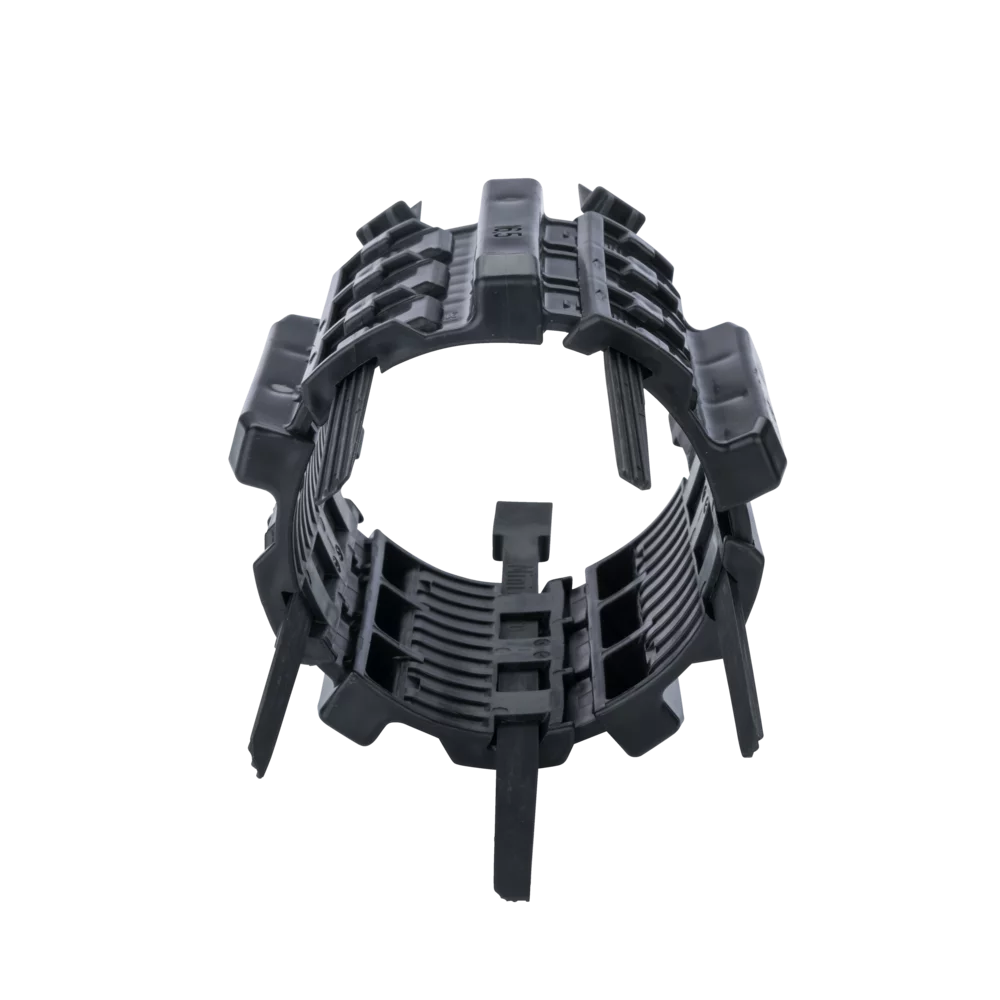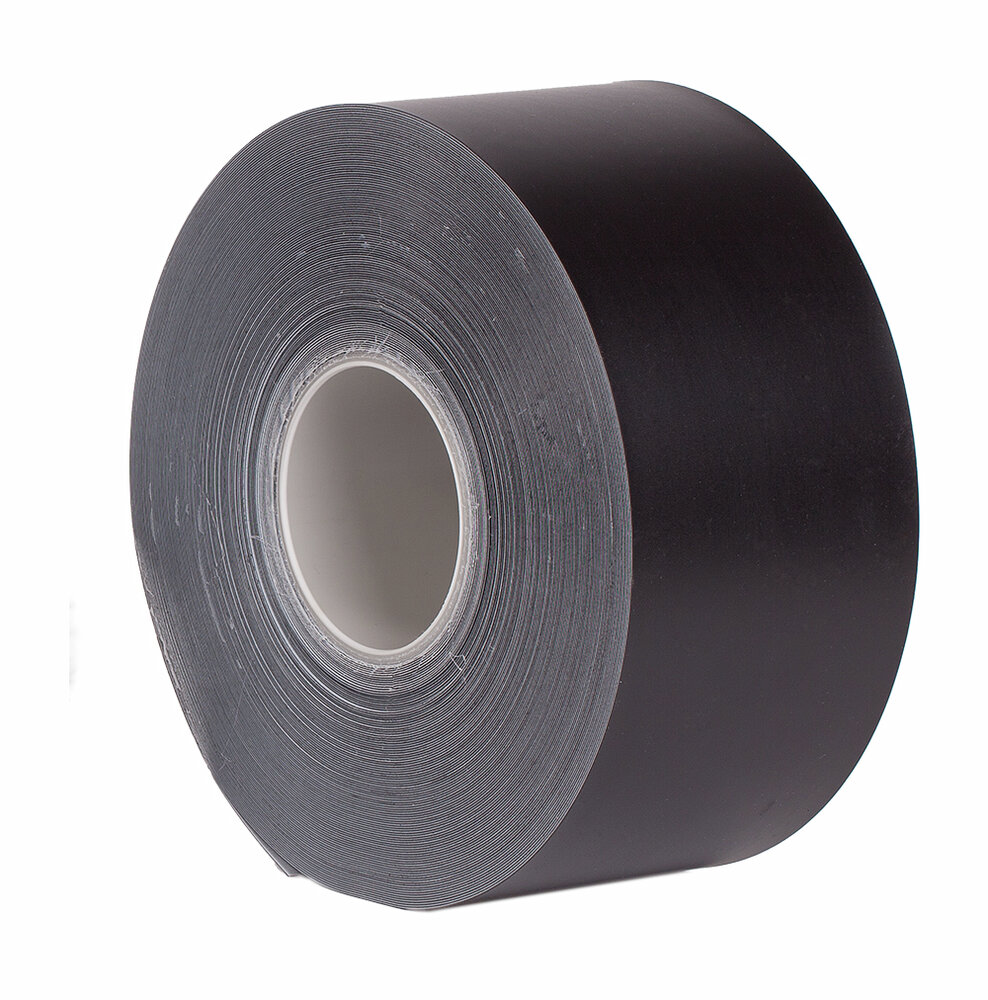CaseX RANGER II® S / M / L
Available, delivery time: 1-3 working days
| For pipe pull-in and pipe storage; metal-free solution, also used for multiple pipe pull-in such as bundling. Suitable for cathodic protected pipes |
| Description | For pipe pull-in and pipe storage; also suitable for particularly small carrier pipes |
| Material type | Polypropylen Blockpolymer PP |
| Color | black |
| Temperature range | -30 °C bis + 100 °C |
| Skid heights | 16,5 mm |
| Compressive strength | 20.684 kPa |
| Description | Manufactured with high performance Polyproylene and has an excellent efficiency against compressive load and better resilience to stress in comparison to Polyethylene. It has extremely good sliding property. Following are some of the technical properties |
| Plastic spacers are usually installed with the following distances: Pipe diameter up to 300 mm at 2.5 m distance Pipe diameter 301 - 600 mm at 2.0 m distance Pipe diameter larger than 600 mm at 1.5 m distance The spans also depend on the specifications of the respective pipe manufacturers. In particular cases, the ring distance can be modified after checking the installation situation. |
| Size | S |
|---|---|
| Skid heights | SLock (extra lock required for each segment) |
Features
Easy pull-in of the carrier pipe The spacer's friction coefficient is reduced to a minimum because they are made of plastic The minimized friction prevents damage to the protective coating and wrapping of the pipes A wide range of skid heights facilitates the centering/storage of carrier pipe in casing pipe Excellent insulating properties of the materials used. All requirements of cathodic pipe protection are fulfilledAreas of application
Casing spacers made of high-quality polypropylene material are universally applicable in the installation of all kinds of pipelines when the carrier pipe runs through a casing pipe.Description
Polypropylene has a waxy and therefore a good sliding surface. The coefficient of sliding friction of PP on steel is approx. 0.2. In comparison, steel on steel is about 0.5. Due to the optimum friction conditions, abrasion is reduced to a minimum. Good stress cracking resistance, flexibility of the body, low weight, bending stiffness and stability of the skids form as well as excellent dielectric isolation characteristics are further benefiting properties. Polypropylene has a higher temperature resistance than polyethylene. The base material is resistant up to 100 °C. The specification of the load capacity applies for a skid height up to 75 mm. For skid heights above 75 mm, these values shall be multiplied by a factor of 0,75. These specifications apply to standard pipelines. To determine the correct distances for an individual application, other factors have to be taken into consideration, such as pipe diameter, wall thickness of pipe and type of media (gas or liquid). We will be glad to assist you in determining the exact dimensions.
Assembly Instructions
| 1 | For the installation of all types of pipes when carrier pipes run through a casing pipe. Connect the segments together inserting the male butt-straps into the slots of the next segment. |
| 2 | Insert the male butt-straps up to the vertical mark (notch on the central slot). |
| 3 | Do not close the ring entirely (leave the last connection open). Wrap the pipe surfaces in the contact area of the pipe/spacer with a anti slipping protection band to ensure optimum safety against slipping. |
| 5 | The insertion of the grooved pin into the segment slot pulls the segments further together, thereby tightening the ring. Please note: should the segments move back instead of drawing closer: the pin has been inserted wrongly (opposite the direction of the arrows). Push in the pin as far as is manually possible. If you can insert the pin completely, pull it out and push in again one groove further left. By this procedure you can tighten the ring each time one groove more. This can be repeated as often as necessary Tap lightly with a hammer on all pins until the ring is tight and non removable on the pipe. Ensure that you tighten all pins and not only some. |
| ! | The pins may be withdrawn by hammer-taps and reinserted without damage to reform the ring. Please attempt an identical or similar positioning of all the insulator skids along one pipe-length! |
| Attention | • After tightening the ring on the pipe all pins must be visible from both sides of the segment. • Make sure that the pins are not completely inserted. If all pins are completely inserted, the ring has not the maximal tension. In this case remove several pins partly and at least one completely. Then reinsert the pin by one groove further left. • Do not hammer too hard because the pin grooves could jump out of the segment toothing. • Please achieve a true and parallel interposition of the segments – this ensures that the pins grooves grip properl |
|

